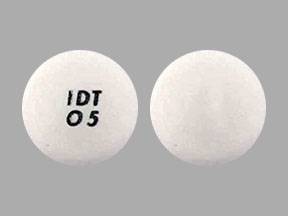
Oxycodone Coupons & Savings Card – Discount Prices from $7.68
Generic for: Roxicodone, Roxybond, Oxaydo
My prescription
Edit
5MG, Oxycodone (30 Tablet Abuse-Deterrents)
Select pharmacy

CVS
$23.70
COUPON PRICE
Walgreens
$7.68
COUPON PRICE
Albertsons
$14.70
COUPON PRICE
Walmart
$443.35
COUPON PRICEOxycodone savings card
Show this card to your pharmacist
Walgreens
$7.68
BIN
ID
PCN
GRP
015995
LHFC695892
GDC
GDRX
Powered by
More prescriptions for pain
More prescriptions for pain
Price history for Roxybond (brand) & Oxycodone (generic)
30 Tablet Abuse-Deterrents, 5MG
Average retail price for Roxybond
Average retail price for Oxycodone
Average SaveHealth price for Oxycodone
Our price history data is based on aggregated prescription data collected from participating pharmacies in America. Our prescription data updates daily to reflect the latest price changes. If you notice a missing data point, it means there wasn't sufficient data available to generate a monetary value for that date.
We analyzed Oxycodone prices for (5MG, 30 Tablet Abuse-Deterrents) over the last 12 months. The average retail price was $1631.19, while the average price using the SaveHealth discount card was $382.45. That's a savings of approximately 76.55% when using our Oxycodone coupon.
Compared to the generic version, Roxybond had an average price of $679.32 over the same time period. With the SaveHealth savings card, Oxycodone is 43.70% cheaper on average than Roxybond.
*Retail prices are based on pharmacy claims data, and may not be accurate when we don't have enough claims.
Oxycodone dosage forms
Dosage Quantity Price from Per unit 5MG 30 Tablet Abuse-Deterrents $427.85 $14.26 5MG 100 Tablet Abuse-Deterrents $1395.56 $13.96 10MG 100 Tablet Abuse-Deterrents $1641.04 $16.41 10MG 120 Tablet Abuse-Deterrents $1965.59 $16.38 15MG 100 Tablet Abuse-Deterrents $1717.01 $17.17 15MG 120 Tablet Abuse-Deterrents $2056.75 $17.14 30MG 100 Tablet Abuse-Deterrents $2307.94 $23.08 30MG 120 Tablet Abuse-Deterrents $2765.86 $23.05
| Dosage | Quantity | Price from | Per unit |
|---|---|---|---|
| 5MG | 30 Tablet Abuse-Deterrents | $427.85 | $14.26 |
| 5MG | 100 Tablet Abuse-Deterrents | $1395.56 | $13.96 |
| 10MG | 100 Tablet Abuse-Deterrents | $1641.04 | $16.41 |
| 10MG | 120 Tablet Abuse-Deterrents | $1965.59 | $16.38 |
| 15MG | 100 Tablet Abuse-Deterrents | $1717.01 | $17.17 |
| 15MG | 120 Tablet Abuse-Deterrents | $2056.75 | $17.14 |
| 30MG | 100 Tablet Abuse-Deterrents | $2307.94 | $23.08 |
| 30MG | 120 Tablet Abuse-Deterrents | $2765.86 | $23.05 |
Oxycodone Warnings
Oxycodone is a medication that requires careful use due to its potential risks and side effects. Below is a summary of important safety information and warnings associated with its use:
Risk of Abuse and Addiction: Oxycodone is a controlled substance with a high potential for misuse and addiction. Follow your healthcare provider's prescription precisely and do not alter your dosage without consulting them. Individuals with a personal or family history of substance use disorders or mental health issues may be at increased risk.
Respiratory Depression: This medication can cause dangerously slow breathing, which can be life-threatening. This risk is heightened at the start of treatment, after a dose increase, or if taken incorrectly. Conditions like COPD, asthma, or a head injury, as well as the use of alcohol or other medications that suppress breathing, can elevate this risk.
Opioid Overdose Risk: Taking more oxycodone than prescribed can lead to overdose, which is potentially fatal. Keep the medication out of reach of children, pets, and visitors to prevent accidental ingestion.
Impaired Cognition and Drowsiness: Oxycodone may cause significant drowsiness and impair concentration. Avoid combining it with alcohol or other sedatives, as this can exacerbate these effects, particularly in older adults.
Drug Interactions: Oxycodone can interact with various medications. Inform your healthcare provider of all the medications you are taking to avoid adverse interactions. Do not adjust your medication dosage without professional guidance.
Pregnancy and Newborn Risks: Prolonged use during pregnancy can lead to physical dependence in the unborn baby, resulting in withdrawal symptoms after birth. Pregnant individuals should use the smallest effective dose for the shortest duration necessary.
Physical Dependence and Withdrawal: Long-term use can lead to physical dependence. Withdrawal symptoms may occur if the medication is abruptly stopped or the dose is quickly reduced. Symptoms include anxiety, restlessness, and chills.
Low Blood Pressure: Oxycodone can cause a drop in blood pressure, potentially leading to dizziness or fainting. Stand up slowly from sitting or lying positions to reduce this risk.
Adrenal Insufficiency: Long-term use may lead to low adrenal hormone levels, resulting in symptoms such as fatigue, dizziness, and nausea. If suspected, medical intervention may be necessary.
Seizures: Oxycodone may increase seizure risk in individuals with a history of seizures. Seek immediate medical attention if a seizure occurs.
Contraindications: Oxycodone should not be used by individuals with severe respiratory depression, severe asthma, gastrointestinal blockages, or those allergic to the medication.
In case of overdose, signs such as slow or shallow breathing, severe drowsiness, or difficulty waking up require immediate medical attention. Having naloxone available and educating family members on its use can be life-saving. Always store oxycodone securely to prevent misuse or theft.
Oxycodone Side Effects
Common side effects:
- nausea
- constipation
- vomiting
- dizziness
- lightheadedness
- drowsiness
- sleepiness
- headache
- weakness
- itching
- trouble sleeping
Less common but important to monitor:
- stomach pain
- chills
- diarrhea
- cough
- shortness of breath
Serious side effects:
- dangerously slow or shallow breathing
- fainting
- seizures
- severe drowsiness
- confusion
- hallucinations
- difficulty waking up
- allergic reactions
Oxycodone Interactions
Some drugs and products may interact with your medication, potentially increasing the risk of serious side effects like slow or shallow breathing and severe drowsiness or dizziness. Be sure to inform your doctor or pharmacist if you are using any products that might cause similar effects. These include certain pain medications like mixed opioid agonists/antagonists (e.g., Butorphanol, Nalbuphine, pentazocine), Naltrexone, and samidorphan. Other products that may cause drowsiness or breathing issues include opioid pain or cough relievers (e.g., codeine, Hydrocodone), alcohol, marijuana, sleep or anxiety medications (e.g., Alprazolam, Lorazepam, Zolpidem), muscle relaxants (e.g., Carisoprodol, Cyclobenzaprine), and antihistamines (e.g., Cetirizine, diphenhydramine). Always check medicine labels, especially for allergy or cough-and-cold products, as they may contain ingredients that cause drowsiness. Consult your pharmacist about safe usage.
Furthermore, certain medications can impact how your body processes oxycodone, affecting its effectiveness. These include azole antifungals (e.g., Ketoconazole), macrolide antibiotics (e.g., Erythromycin), Mifepristone, HIV medications (e.g., tipranavir), rifamycins (e.g., Rifabutin, Rifampin), Ritonavir, and certain seizure medications (e.g., Carbamazepine, Phenytoin).
Lastly, this medication may interfere with lab tests, such as those measuring amylase or lipase levels, possibly leading to false results. Ensure all healthcare providers and lab personnel are aware that you are taking this drug.
